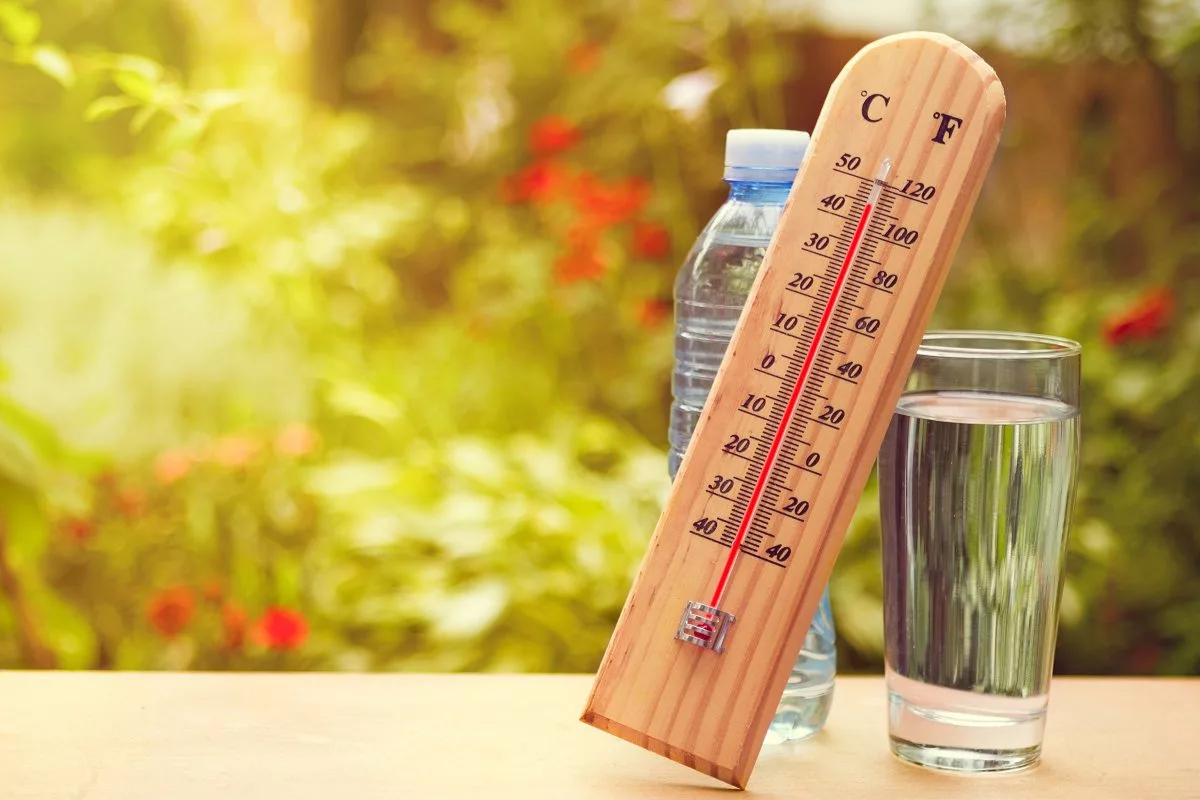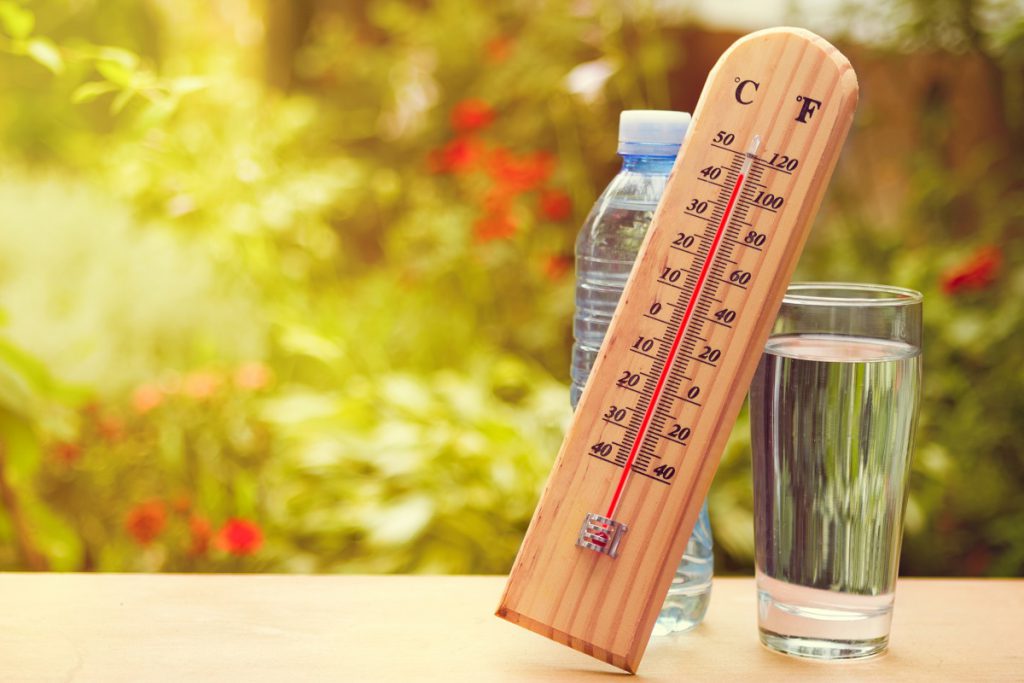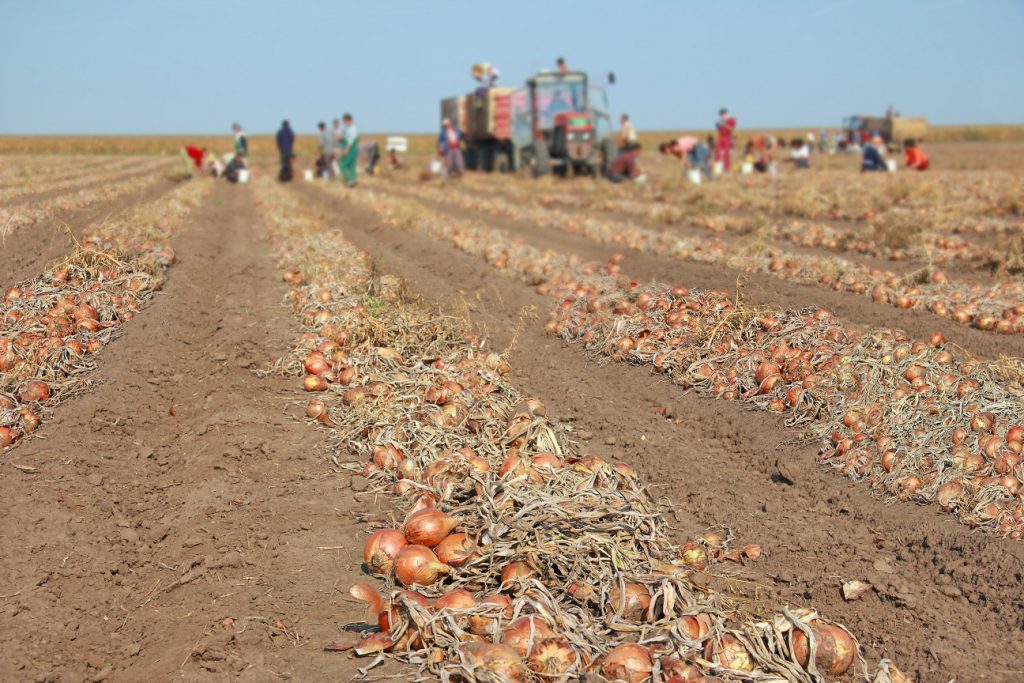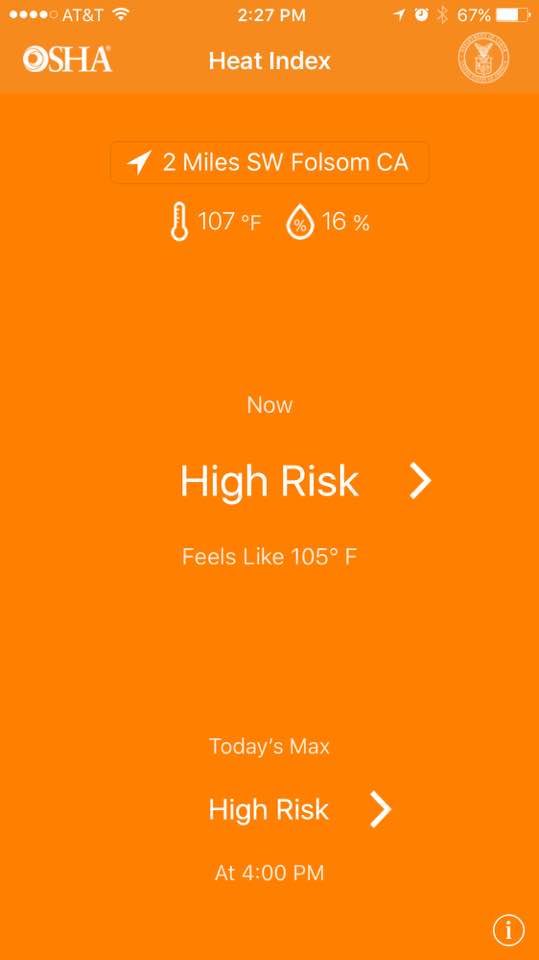
Heat Illness Prevention: Managing Rising Temperatures in the Workplace

Written by: Joe Mangiardi, NES, Inc.
 Heat illness prevention revolves around rest, shade, and water.
Heat illness prevention revolves around rest, shade, and water.
Manage Rising Temperatures with Heat Illness Prevention Strategies
As temperatures throughout California begin to steeply climb, it is time to remind employers and employees about the importance of utilizing responsible heat illness prevention safety measures—particularly for those who work outdoors or in hot indoor environments.
Extreme heat is responsible for more medical emergencies than any other weather hazard. Every year in the U.S. thousands of workers become sick from occupational heat exposure. Outside of the workplace even more are afflicted, amounting to 65,000 overall cases of acute heat illness annually. Among those at risk, children, pregnant women, the elderly, the physically compromised, and workers in labor-intensive industries such as agriculture and construction are at the greatest risk—according to the Occupational Safety and Health Administration (OSHA), more than 40 percent of worker deaths attributed to heat occur in the construction industry.
 More heat illness deaths occur in construction than in any other industry.
More heat illness deaths occur in construction than in any other industry.
To help combat these numbers, the Environmental Protection Agency (EPA) and the Centers for Disease Control and Prevention (CDC) have developed an electronic booklet entitled Climate Change and Extreme Heat: What You Can Do to Prepare. This booklet defines extreme heat and addresses various heat-related topics, including a projection for the future of extreme heat conditions, who is most at risk from extreme heat, and what can be done to minimize the risk of heat illness.
OSHA’s Heat Illness Prevention Campaign
OSHA initiated its Heat Illness Prevention campaign in 2011 to help inform employers and workers of the dangers associated with working in the heat. This campaign stresses adherence to a deliberate and focused schedule of water, rest, and shade for affected workers. To promote awareness, OSHA organizes outreach events and conducts training and informational sessions throughout the country. Further efforts include social media posting and numerous publications (many of these are referenced in this article).
The following is a short video from OSHA outlining the dangers of occupational heat exposure:
Employers should keep in mind that, according to OSHA law, workplaces must be free of known safety hazards—extreme heat is no exception. Even though extreme heat generally cannot be directly removed from the workplace, employers of workers who will be laboring in high heat conditions should develop a comprehensive heat illness prevention program to mitigate the hazard. Such a program should include the following:
- Water, rest, and shade: provide workers with an appropriate amount of water and shade; facilitate access to the water and shade, and ensure adequate break periods.
- Allow workers to acclimatize: as the season changes and temperatures rise, workers will need to gradually adjust to the heat. Full acclimatization occurs for most workers within four to 14 days (provided that they have worked at least two hours per day in the heat during this time). New workers and older workers typically require the most time to acclimatize.
- Training and emergency planning: train workers on heat illness prevention safety measures and outline and communicate to all employees a plan of action so that all are prepared in the case of a heat-related emergency.
- Monitor workers: employers should keep an eye on workers for signs of heat illness; adopting a buddy system between employees is another effective method.
OSHA considers heat illness to be preventable. Abiding by the above four guidelines will significantly decrease the chances that your workplace will experience a heat-related emergency.
Cal/OSHA: Heat Illness Prevention Regulations
Cal/OSHA has set rules for California employers that differ in some ways from federal requirements. These can be found in Title 8 of the California Code of Regulations (CCR), Section 3395 – Heat Illness Prevention. Similar to the federal OSHA regulations described above, Cal/OSHA requires California employers to provide proper training, water, shade, and planning. Planning refers to establishing written procedures that will align workplace policy with the Cal/OSHA heat illness prevention standard.
Important changes to the standard went into effect May 1, 2015 and are compared to the previous regulations in a Cal/OSHA Department of Industrial Relations (DIR) publication entitled Heat Illness Prevention Regulation Amendments. Notable adjustments to the standard include:
- Shade must be provided for employees in an accessible manner. Use of shade cannot be deterred or discouraged.
- The temperature at which shade must be present or constructed for employees has been reduced from 85 to 80 degrees Fahrenheit (even below 80 degrees, properly ventilated or cooled shade must be present and available upon employee request, though this is not subject to as many specific requirements).
- Shade must comfortably accommodate all workers who will be taking breaks at any given time, a change from the previous stipulation that shade be provided for 25% of the employees working a shift.
- Additional language has been added to 8 CCR §3395 requiring employers to allow and encourage employees to take preventative cool-down rest periods of no less than five minutes in duration. During these cool-down periods employers must monitor employees carefully to ensure that they are not suffering a heat-related medical emergency; if a medical condition is present, the employer must administer appropriate first aid or arrange for emergency response.
- Employers must initiate high-heat procedures in temperatures at or above 95 degrees Fahrenheit. These procedures are to include ensuring employees are adequately monitored for signs of heat illness, designating a person or persons to be in charge of summoning emergency response or authorizing other employees to do so, and regularly reminding employees to drink water.
- For the agriculture industry, in conditions at or above 95 degrees Fahrenheit, cool-down rest periods are required every two hours.
 Agriculture workers require special heat illness prevention considerations.
Agriculture workers require special heat illness prevention considerations.
- It remains a requirement that water be provided for employees in the amount of one quart per employee per hour for the entire shift; the statute now explicitly states that water must be “fresh, pure, suitably cool, and provided to employees free of charge” and must be located as close to work areas as practicable.
- During a heat wave—defined as when temperatures are expected to reach or exceed 80 degrees Fahrenheit or rise by at least ten degrees from the highest temperature of the prior five days—employees must be closely observed while they acclimatize.
- Emergency response policies must be implemented. Pre-shift meetings are now required to review high-heat procedures.
- Employee training for extreme heat conditions has long been required but must now include information on the changes made in 2015, specifically those concerning employers’ responsibilities and employees’ rights to water, shade, and an appropriately designed high-heat plan.
Only some of the main changes to 8 CCR §3395 are listed above; employers and employees are encouraged to review the regulations in full. Cal/OSHA has put together a Heat Illness Prevention Enforcement Q&A to help with various questions that may arise.
Key Resources for Heat Illness Prevention
Here are some key resources for heat illness prevention that can be found online:
- A helpful repository for extreme heat management resources can be found in the Heat Illness (Outdoor Workers) section of OSHA’s Publications page. This page is filled with fact sheets, posters (English and Spanish), and QuickCards.
- The National Institute of Occupational Safety and Health (NIOSH) provides sources of information on its page entitled NIOSH Fast Facts: Protecting Yourself from Heat Stress and the associated NIOSH heat stress fact sheet.
- Cal/OSHA offers a sample procedures for heat illness prevention guide for employers, which includes a checklist for items that help prevent overexposure to heat. This can be found on Cal/OSHA’s heat illness prevention webpage, which includes several links to separate pages dedicated to elaborating on specific heat-related topics.
Also, check out the 2016 NES article Beat the Heat for a breakdown of the three main categories of control for heat illness prevention. NES has also published a Heat Illness Fact Sheet, a one-page guide to heat illness and heat illness prevention procedures.
Updated Heat Safety App Now Available
With developmental assistance from NIOSH, OSHA’s original heat safety app has been updated to improve the user experience. This valuable heat illness prevention tool is available for both iPhone and Android mobile devices (click the link applicable to your operating system to download the app). The app helps to keep workers in hot conditions safe by providing heat index forecasts and hourly heat index information accompanied by a corresponding risk level, allowing employers and employees to monitor heat-related risk on a daily and, in more extreme conditions, hourly basis. In this way, heat illness prevention safety measures can be planned and adjusted accordingly.

The above is a screenshot of the OSHA-NIOSH Heat Safety Tool for iPhone in action at NES headquarters in Folsom, CA on the day this article was published—very hot!
Note: those who already have the original app will need to download the new app before September 30, 2017, at which time the previous app will no longer function.
How NES Can Help
NES provides heat illness prevention training covering the types of heat illness, risk factors, preventative measures, and employer requirements to stay in compliance with Cal/OSHA regulations. Training is available in online format and as on-site training (we come to your facility to conduct the training) for government agencies and public and private businesses.
For more information about our Environmental Health & Safety training and consulting capabilities, contact NES at 916-353-2360 / 1.800.NES.ADVISE (1.800.637.2384) or office@nesglobal.net.
References:
EPA/CDC Booklet: Climate Change and Extreme Heat: What You Can Do to Prepare
OSHA Webpage: Heat Illness Prevention Campaign
OSHA Heat Illness Video
Cal/OSHA: Heat Illness Prevention
OSHA Publications Page: Heat Illness (Outdoor Workers)
OSHA Webpage: Occupational Heat Exposure
NIOSH Fast Facts: Protecting Yourself from Heat Stress
Cal/OSHA Employer Sample Procedures for Heat Illness Prevention
Cal/OSHA eTool Webpage: Heat Illness Prevention
Cal/OSHA Department of Industrial Relations Publication: Heat Illness Prevention Regulation Amendments
